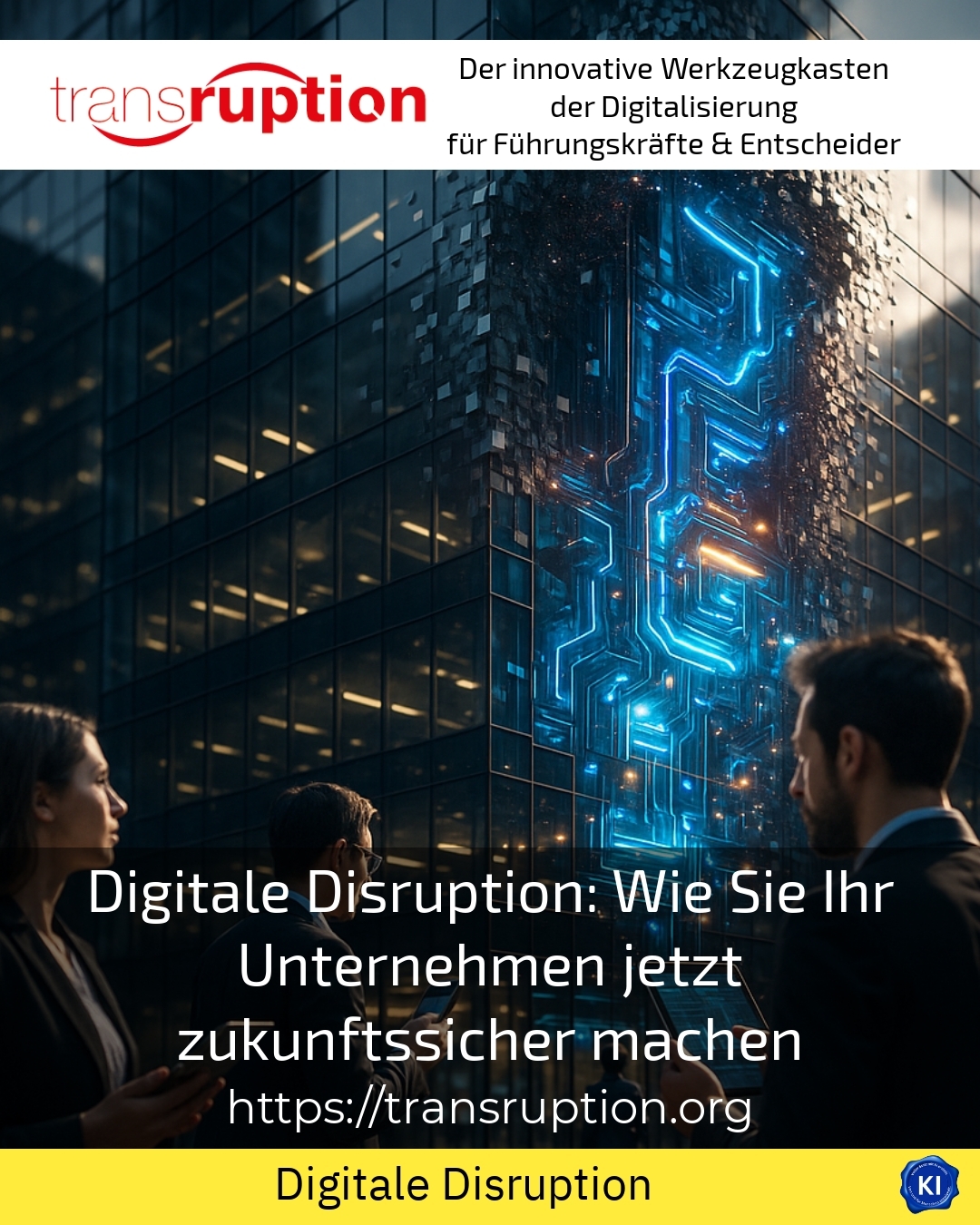In a world increasingly dominated by the Digital disruption is characterised by digitalisation, many companies are faced with the question of how they can adapt their business models and processes to the changing market conditions. This radical change brought about by digitalisation not only affects the way in which companies interact, but also leads to the emergence of new digital business models and fundamentally changes the interaction between customers and companies [1][3].
What is digital disruption?
Digital disruption describes the process in which existing business models are fundamentally changed or even replaced by digital innovations. These changes often lead to a fundamental restructuring of the affected markets and are so successful because they usually offer a greater advantage for customers than traditional products and services [5][7].
One example of successful digital disruption is Airbnb, which has revolutionised the traditional accommodation industry by providing a platform for private accommodation. Similarly, Netflix has strongly challenged traditional video stores and television providers with its streaming services and opened up new markets [3][6].
Examples of digital disruption
In addition to Airbnb and Netflix, there are many other examples of companies that have changed their industries through digital disruption. Another example is Uber, which has fundamentally changed the traditional taxi industry through a platform-based service [7].
Digital disruption is not just limited to the consumer market. There are also innovative approaches in industry and logistics. For example, PTS Logistics is using the Microsoft HoloLens to improve logistics through augmented reality and position itself as a pioneer in the industry [4].
Industrial examples
Another interesting example is ArcelorMittal, which is finding the key to success through digitalisation in small steps. This strategy shows that large investments are not the only way to digitalise successfully [4].
In the manufacturing industry, companies such as Bosch are relying on digital transformation to optimise their production processes and make them more efficient. These strategies enable them to react more flexibly to market changes and gain competitive advantages [12].
Strategies for adapting to digital disruption
In order to adapt to digital disruption, companies should adapt flexibly and utilise new technologies. This can be done by using big data and machine learning to optimise processes and develop new business models [3][9].
Another important step is the introduction of people-centred approaches and effective change management. These approaches help companies to successfully implement the digital transformation and prepare employees for the new challenges [18].
Strategies for digital transformation
A practical example is IKEA, which supports customers with the assembly of furniture by integrating TaskRabbit. This partnership shows how technology can be used to offer customers a better experience and at the same time expand its own market share [2].
Hasbro uses data analytics to develop targeted marketing campaigns that effectively focus on parents as key purchasing decision makers. This led to a significant increase in sales and shows how digital transformation can directly influence business success [2].
Digital disruption: a long-term success
Digital disruption is not just a short-term challenge, but also offers long-term opportunities for companies. By utilising new technologies and adapting to changing market conditions, companies can strengthen their competitiveness and become future-proof [9].
Another example of this is Netflix's digital transformation, which has not only revolutionised its own business model, but has also redefined the entire market for streaming services. This type of innovation shows that companies that adapt early on can benefit from digital disruption in the long term [6][10].
My analysis
Overall, the Digital disruption The digitalisation process helps companies to adapt to changing market conditions and develop new business models. By utilising digital technologies and adapting flexibly to changing customer needs, companies can strengthen their position in the market and be successful in the long term.
Further links from the text above:
The information in this article is based on various sources, including Innolytics Digital Disruption, Consultport, and Sauldie.
For more information and if you have any questions, please contact Contact us or read more blog posts on the topic TRANSRUPTION here.
















